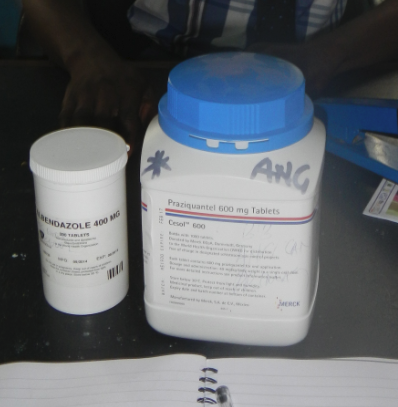
Researchers at LSTM have conducted the first study directly carried out in children for the treatment of intestinal schistosomiasis concerning effective dosing levels of praziquantel (PZQ).
The results of the study were initially reported to the WHO at an expert meeting in Geneva in September 2015 and are now published in mBio, a journal from The American Society for Microbiology. The work represents an important step towards changing international guidelines and expanding access of PZQ treatment to young children currently living with schistosomiasis.
Schistosomiasis is a neglected tropical disease typically associated with chronic morbidity. PZQ is the only available antiparasitic drug to treat the disease and each year, millions of African children receive PZQ by mass drug administration. Children receive treatment a standard single dose of 40 mg/kg of body weight, a direct extrapolation from studies involving adults and likely is in need of revision. This research was carried out in 60 Ugandan children and involved pharmacokinetic (PK) and pharmacodynamic (PD) analysis to assess the efficacy of different levels of dosing.
This multidisciplinary study was undertaken at the LSTM in collaboration with colleagues at the University of Liverpool, and in Uganda and the Netherlands. It utilised state-of-the-art analytical facilities within LSTM’s Research Centre for Drugs and Diagnostics (RCDD). Crucially this study was the first to measure bloodstream levels of PZQ directly in young children, comparing standard- (40 mg/kg) versus raised-dosing (60 mg/kg) to optimise treatment. Results show that in this paediatric setting, 40 mg/kg dosing was insufficient, especially in boys, and use of 60 mg/kg should be favoured if worm burdens are to be effectively reduced.
LSTM’s Professor Russel Stothard, the leader of the study commented: “I am really proud to have worked with so many experts on this publication who have each consolidated all our efforts over the past four years to answer several questions but also raise new ones in turn. Foremost, this was the first PK-PD study in children and provides crucial evidence to expand access of treatment. Surprisingly, blood stream levels of PZQ varied widely between children and we firmly suspect this was caused by underlying gastro-intestinal tract damage already being caused by worm eggs. In future, we need to avert this morbidity as soon as possible which further calls for first treatment as promptly as possible”.
These results will also be taken up further by COUNTDOWN in exploring the current burden of paediatric schistosomiasis in Ghana and Cameroon to reshape national control programme policies and practices.
You can read the paper here.